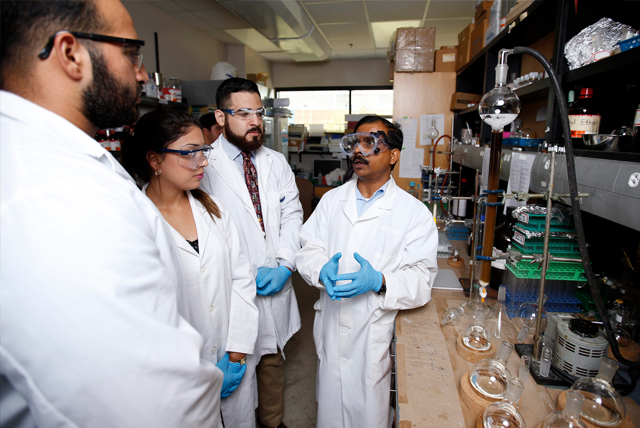Document Type
Article
Publication Date
4-19-2023
Abstract
The development of methodologies for regioselective C–H functionalization of N-heterocycles has seen sustained growth over the last two decades. Cooperative reactivity stemming from the addition of Lewis-acidic metals to late-transition-metal complexes has enabled regioselective catalytic transformations. Progress in the design of ligands and Lewis-acidic metal precursors has led to development of in situ cooperative catalysts able to facilitate C–H functionalization of pyridine at C-2, C-3, and C-4 positions. Very recently, focused efforts toward well-defined heterometallic complexes facilitating C-H bond catalysis have been targeted. Transformations showcasing regioselective C-2 transformations have been achieved. This perspective examines select examples delineating the evolution of strategies to better facilitate cooperative reactivity between Lewis-acidic metals and late transition metals in regioselective C–H functionalization. Potential pathways to further evolve methods to access modular regiodivergence in pyridine C–H bond catalysis will be discussed.
Recommended Citation
Shoshani, M. M. (2023). Cooperative heterometallic platforms enabling selective C–H bond activation and functionalization of pyridines. Cell Reports Physical Science, 4(4). https://doi.org/10.1016/j.xcrp.2022.101213
Creative Commons License

This work is licensed under a Creative Commons Attribution-NonCommercial-No Derivative Works 4.0 International License.
Publication Title
Cell Reports Physical Science
DOI
https://doi.org/10.1016/j.xcrp.2022.101213



Comments
Under a Creative Commons license